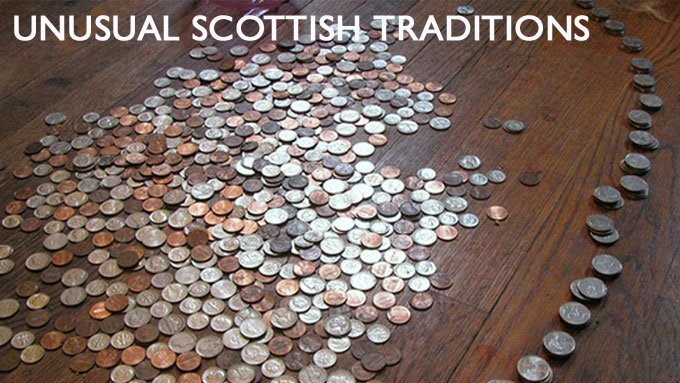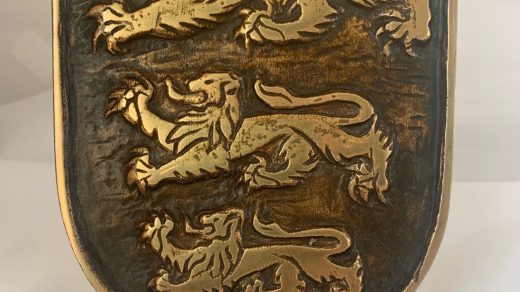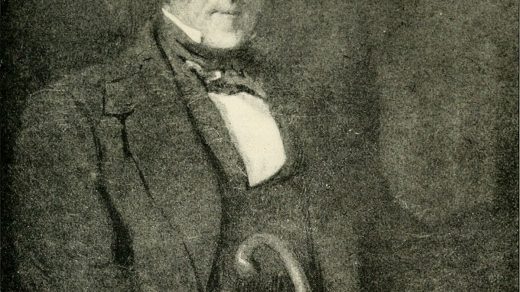Hi friends, A tradition in Scotland when I was a lad in the sixties, was called a “poor-oot”
The Royal wedding in April was a thoroughly elegant affair, but there was one thing missing from all the splendour. This was no scatter, scrammle or poor-oot, as it is variously known in Scots – a distribution of coins or sweets to the watching children. Sometimes this is done on the way to the church and sometimes on leaving it. It might be the responsibility of the father of the bride, the groom or the guests. As the Scots Magazine (April 1894) relates: “A marriage was about to take place in a private house in Bristo Street, Edinburgh. Crowds of children round the door assailed the guests as they arrived with the well-known cry of ‘Poor oot!’”
This custom is still observed in some places but is becoming increasingly rare. A reason is to be found in one of the quotations in the Dictionary of the Scots Language illustrating the word scatter. The Church Notes (Nov. 5 1967) for St. George’s West, a church right in the heart of Edinburgh, comments: “The increasing volume of traffic today makes the traditional ‘poor oot’ or ‘scatter’ a hair-raising experience”. Many a wedding party had only pennies and halfpennies to spare but they weren’t mean with them. A lively example comes from Edward Albert’s Herrin’ Jennie (1931): “‘Poor oot! Poor oot!’ yelled multitudes of ragged urchins…Jennie had thought of them…she had a big bag of coppers, and this she emptied with stupendous prodigality into the gutters”.

The better-off people gave according to their means. The Northern Scot (23 Oct 1915) attests “Fu’ mony a merchant I could name Has gien a splendid scatter”. At the other side of the country in Glasgow there is a moment of great excitement in John and Willy Maley’s From the Calton to Catalonia (1990): “Quick! There’s a scramble in Parnie Street! The wee yin there’s away wae a hauf-croon”. Before decimalisation, a half crown (one eighth of a pound) was a fortune to a child. Margaret Bennet’s invaluable book, Scottish Customs from the Cradle to the Grave, adds that children would shout “rusty pockets! rusty pockets!” if they thought the wedding party wasn’t generous enough. Her informants tell us that the children would put a rope across the street to stop the bridal car, or tie up the gate to stop the newlyweds getting out of the churchyard.
There was a civil disturbance in 1558. An account of the Queen’s wedding has survived as a fragment in a book binding. It is reproduced in The Marriage of Mary Queen of Scots to the Dauphin: a Scottish Printed Fragment, ed. Douglas Hamer, The Bibliographical Society, London, 1932 and the National Library of Scotland has put it online here. Here is a taste of the start of it:
[They scattered] gold and silver amang the pepill on every side of the scaffald within the kirke. Whar with qui potest capere capiat was sik yalping and yeoling, sik calling and crying as, as the like (I think) was never hard. Ther gentillmen tint their clokis, gentilwemen ther fartingales, merchantmen ther gownes, maisters in art ther hudis, studentis ther cornet cappis, and religious men had ther scapilliries violently riven fra ther shulders.
They scattered gold and silver amongst the people on every side of the platform within the kirk. Wherewith ‘who could seize, let him seize it’ there was such yelping and yowling, such calling and crying, as the like, I think, was never heard. There gentlemen lost their cloaks, ladies their farthingales, merchants their gowns, masters of arts their hoods, students their cornered caps and clerics had their scapularies violently torn from their shoulders.
Perhaps Prince William and his bride did the right thing in not having a scatter after all.




What an interesting custom!
it was always fun, when you were young.. lol got a lot of sweets hehe.